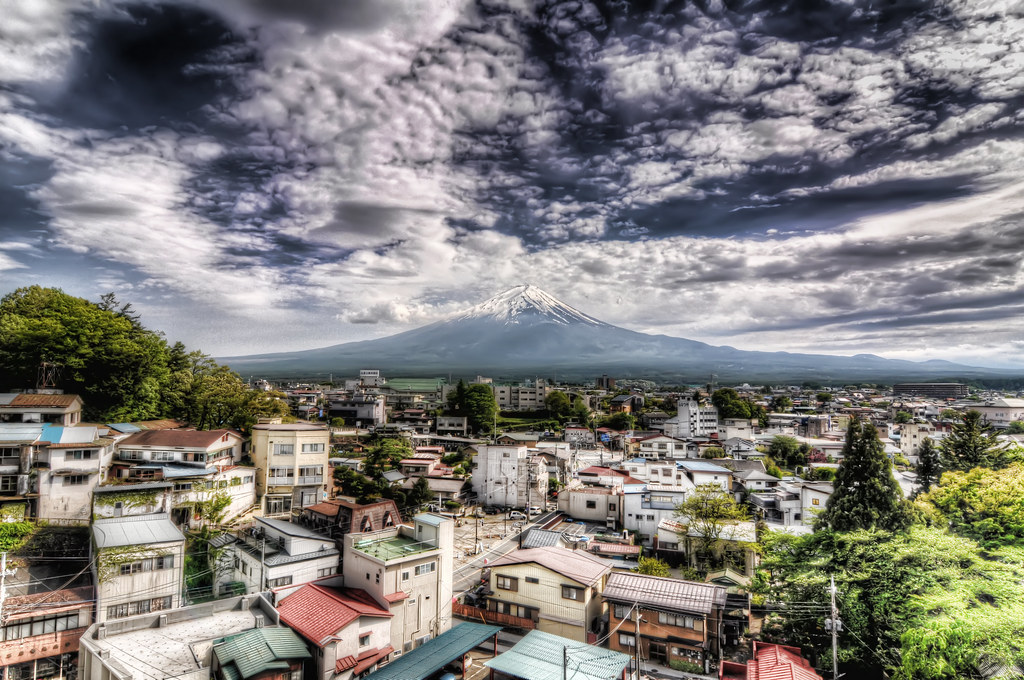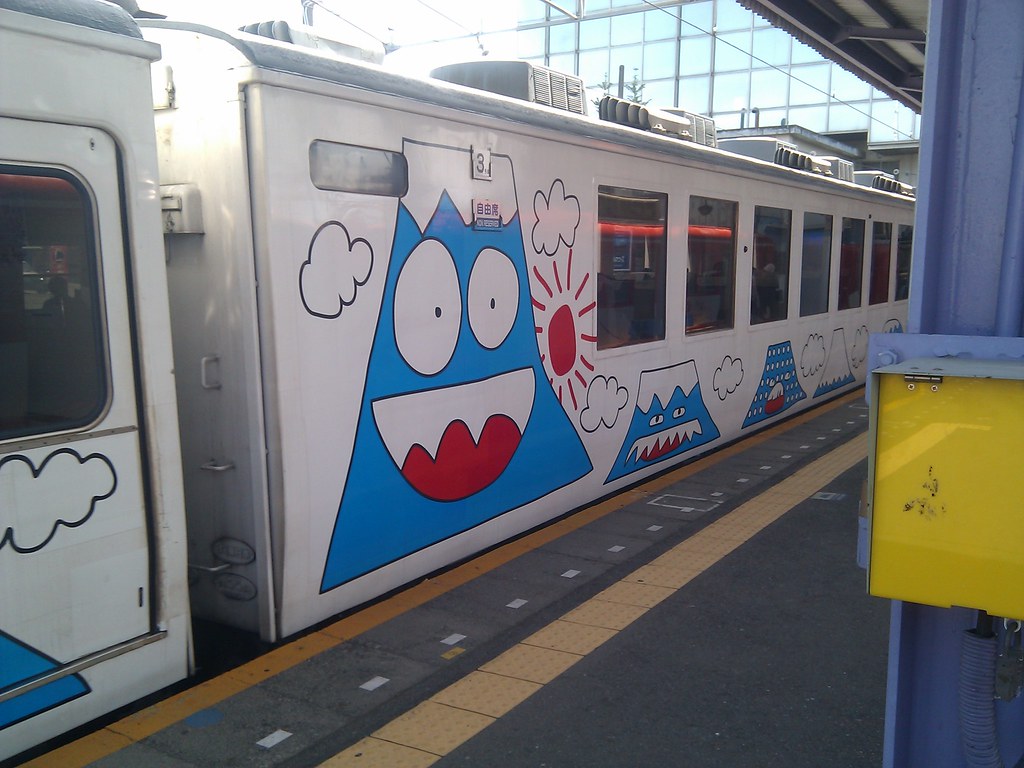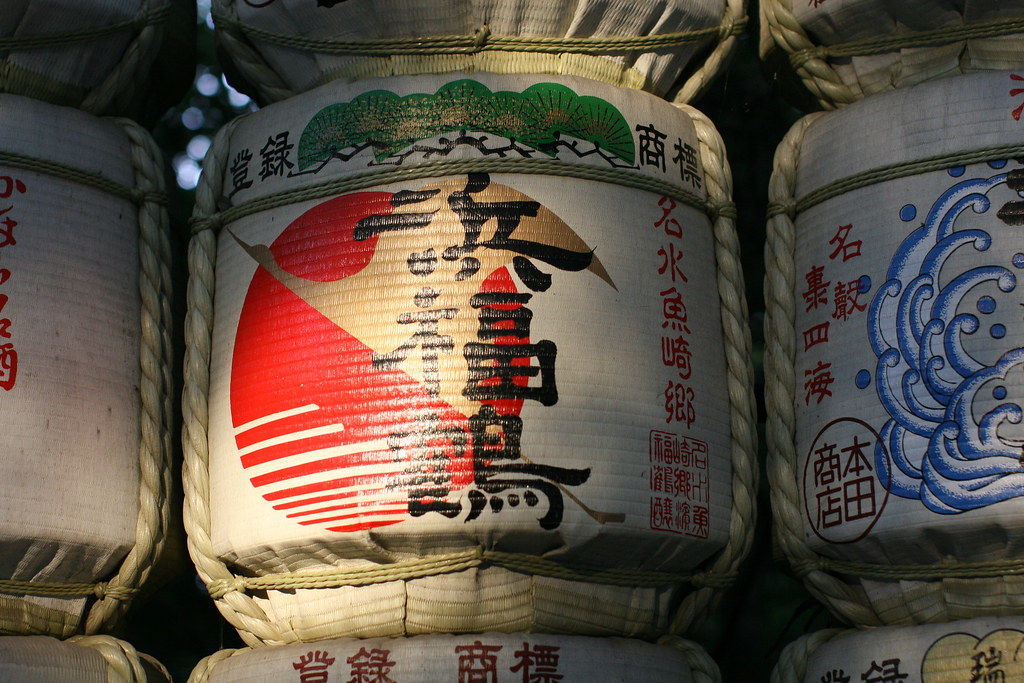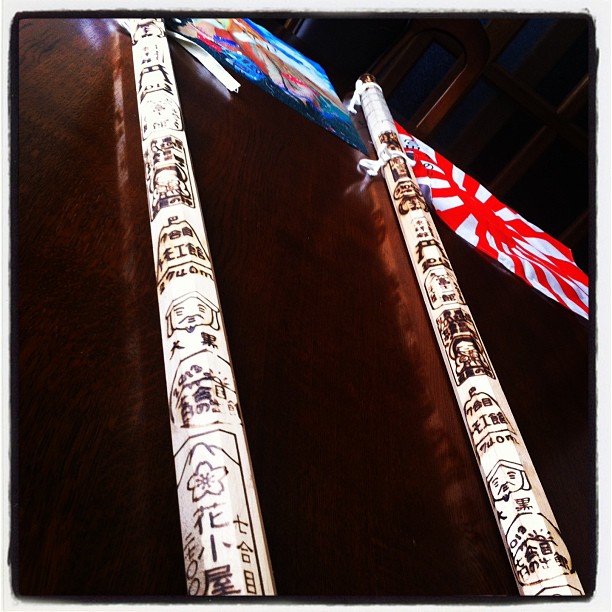Fuji is 3 776 m high, and, when the weather is nice, it is visible even from Tokyo – those occurrences do not escape the attention of the Japanese who on such occasions take many pictures of the mountain. This highest mountain of Japan is also an active volcano, although the last eruption occurred in the eighteenth century. Fuji was put on the UNESCO list not as an object of natural heritage, but as an object of cultural heritage. The reason for such a decision was the inspiration that Fuji provide artists and poets with, and that it has always been a place of pilgrimage. After all, Fuji, next to Tate and Haku, is one of Three Holy Mountains of Japan.
Before climbing
The Japanese use to speak: “A wise man climbs Fuji once, a fool – twice”. The meaning of this saying can be understood in two ways. The first interpretation is this: every Japanese should once in his life climb to the summit of Mount Fuji, but doing so for the second time is pointless. The second interpretation emphasizes the effort that must be put in order to get to the top, and that it would be foolish to repeat it. It is true that the average person needs 8 hours to get to the top of Mt. Fuji, and is doing it in a crowd of other people (the season is two months – during that time the peak is reached by 300 000 people). Therefore, be armed with physical strength and/or strong will.
Should you climb the highest mountain in Japan during the season – do not take a tent with you. Breaking it is illegal. The sleeping bag is also unnecessary. Sleeping in undesignated places is punished with high fines. In the event of a strong need for sleep you can use huts providing accommodation at each station of the track. Be prepared, however, that their prices are high. Same as the prices of food or drinks, so you better have it with you. Of course, in reasonable quantities. 1-2 liters of water per person, energy snacks, and nutritious food that will not break down at high temperatures, as riceballs, should suffice.
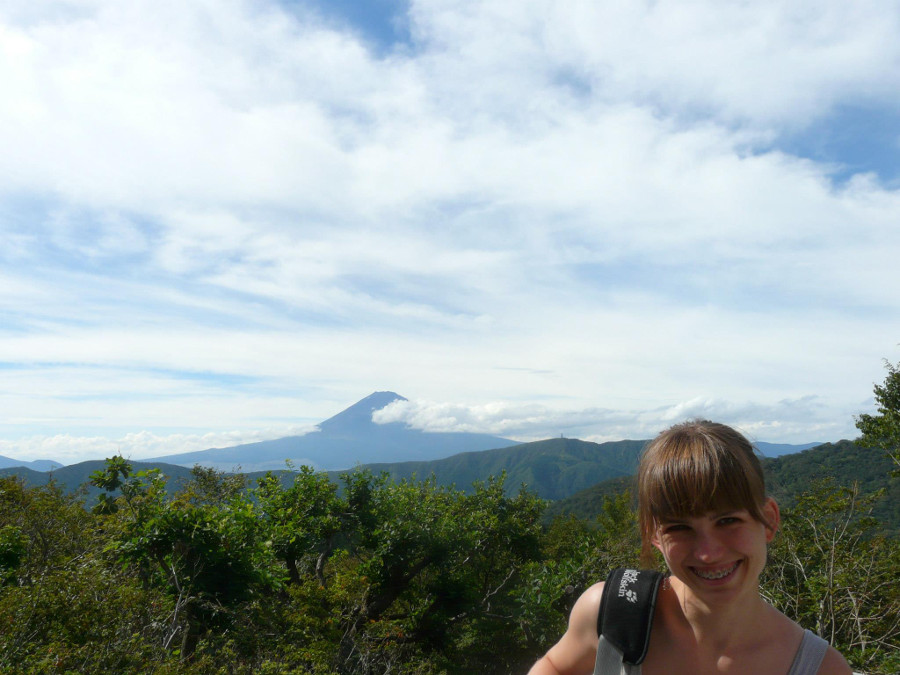
Seeing Fuji from Ōwakudani
The basic equipment consists of comfortable shoes adapted to mountain climbing, and “dressing like an onion”. Nonetheless, there is no need to have a jacket (except of a waterproof jacket), but you should have a thick fleece or weatshirt with you – although the season lasts from July to August, the nights are cold, and the weather changeable. Despite this, a bad idea is dressing up in shorts – long trouser legs may serve as a protection against wounds in the event of a falling, or provide warmth at night. In addition to trousers, you can have an additional t-shirt to change- sweaty body quickly cools, and the evenings and nights may get chilly atop Fuji. A good idea is to have a cap and thin gloves (these may also be useful in places where you need to help yourself in climbing with your hands). Climbing out of season is legal, but only a few did it, as the huts and restaurants are closed. These few are foreigners who do not live in the belief that climbing Fuji off-season results in death 😉
The climb can be completed in two ways: by night and day. In the first case, you should bring a flashlight, extra batteries, sunglasses, and a sun-blocking cream. People who climb Fuji during the day usually have the opportunity to watch the sunset and sleep in a hut to greet the morning sun. The descent at night is not the best idea, so, consequently, from the item listed above only glasses and the cream will be enough.
In the mandatory equipment there also are toilet paper, garbage bag (to take your garbage with you), small change (toilets are paid, it is best to have 100-yen coins). Moreover, there is a slight possibility of altitude sickness, so one may like to have small bottles with oxygen. Those can be bought at the 5th station.
I also have to add, though talking about these things is far from proper, that the physiological needs should be met only in designated areas, i.e. paid toilets. Disobeying this rule will result in another high fine. In addition (although I should not do that again), try to imagine a 300-thousand crowd that passes through the route of Fuji, and takes care of some of the physiological needs in the bushes. The view afterwards would be worse than that of the sand dunes at the Polish Baltic Sea 😉
Cherishing tradition
Jakub and his colleagues did not plan to climb Mount Fuji – it was a spontaneous idea. Therefore, they got some information on the subject, and started their journey by entering the train from Shin-Yokohama. After changing the train a few times, around 4.00 PM, they reached the town Fujiyoshida located at the foot of Fuji. Before setting out to climb, they went to the temple Fuji Sengen, where a procession to celebrate the Festival of Fire Yoshida was to begin.
Yoshida Fire Festival is held every year. It’s been celebrated by 500 years in honor of the goddess of Mount Fuji, and is aimed at halting the volcano from erupting for the next year. What is more, currently serves as a ceremonial end of the season climbing, too. It lasts two days.
The Festival by TYT Nation
On the way to the temple they noticed that preparations for the entire procession are underway. Torches were being prepared, so that they could be lit along the road during the procession. Alongside the procession’s route roadside shops with food were being opened. In front of the temple a barrel of sake was opened – everybody who paid 100 yen could try a portion from a sakazuki. Right beside the barrel there was a sink, where a woman was washing sakazuki right after the customer drank the sake.
Once the Japanese and tourists gathered to begin the procession, two omikoshi were brought out – those are “portable” shrines , the focal point of the whole procession. In one of them hides a goddess who during the procession has to assess the value of the city – because of this, the route runs from the temple to the city center. If the city’s value is satisfactory – the goddess will stop Fuji from erupting for the next year. The omikoshi are very heavy, and require strong men to carry them. The more that during the road only three stops shall be allowed. The tradition of the Festival of Fire is very old, as well as the families who had been cultivating it for generations.
Coming up to meet the Sun
As was already mentioned, climbing Fuji is not only a tourist attraction or a way to test someone’s physical abilities. It is also a mystical experience, as trails leading to the top are pilgrimage routes as well. Moreover, those were traversed from time immemorial.
To get to welcome the dawn of the sun, Jakub and his colleagues could not afford the luxury of watching the entire festival. They had to go almost the whole trail to the summit of Fuji at night. Each route consists of 10 stations, and by public transport you the station 5 can be reached. Everyone decided to start from the foot of the mountain. The route for the first few kilometers (from station 1 to 5, at the same time being the largest part of the route) is rather flat. Further parts are becoming steeper. The fact that hordes of pilgrim-tourists start their journey from the 5th station affected the previous stations – only the remains of the old station buildings can be found. What is more, only at station 5 one can buy a staff, and not just another regular staff! In addition to the practical aspect (it helps in climbing) it has the commercial and entertainment functions: one can collect stamps on it. Stamps are given on every station from the fifth inclusive. The Japanese really like to collect stamps (stickers as well) – those can be are obtained at all the major attractions.
At the fifth station it started to get dark. Unfortunately, this is where one of Jakub’s colleagues had to let go climbing further due to muscle cramps. Nevertheless, due to the fact that it started to get dark, one could watch the climbers with flashlights while creating light trails to the mountain top. From the eighth station the difficulty increases significantly: stairs are more frequent, the use of hands in climbing becomes necessary, one may start to feel the lack of oxygen, in some sections queues of other climbers form. To reduce the risk of altitude sickness one should slow down. Even strong and athletic people may begin to feel uncomfortable. Bottled water is becoming more expensive.
On the eighth station (about 3 020 m) they decided to take a break, and even more – to take a three-hour nap in the hut. For the price of 5000 yen the hut offers a place to sleep, a blanket, and a pillow in a plastic bag (for hygienic reasons) for one night. You can warm up by the fire: it’s free for hut guests and paid for all others. Sleeping beside the fire is strictly prohibited.
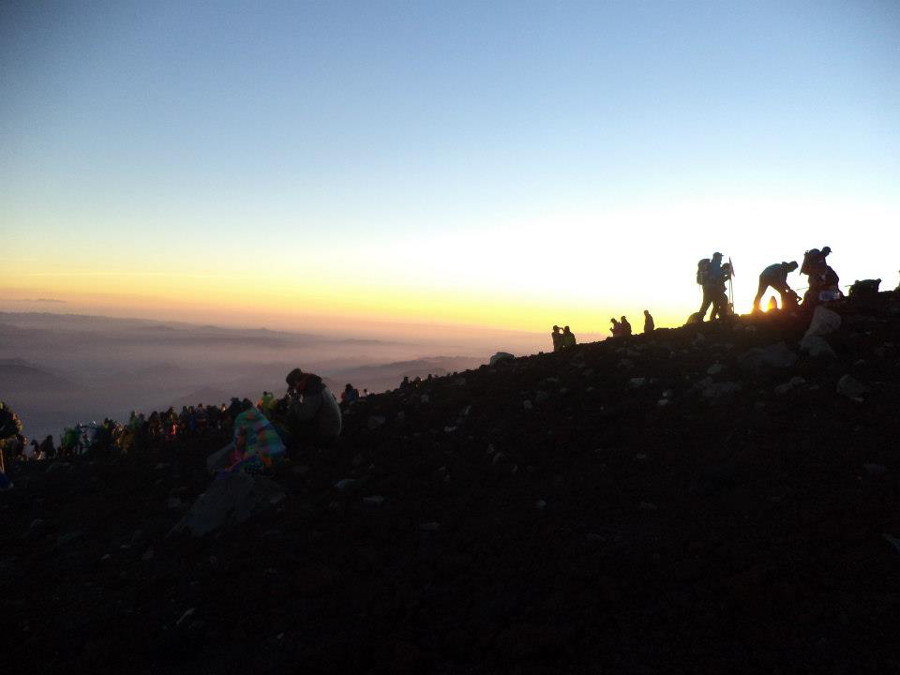
Greeting the Sun at Fuji’s summit
After a nap, the whole group moved on towards the summit. When they reached it, it turned out that a lot of people were already waiting there for the upcoming dawn – sittingg down with their faces to the east. The sky was a bit cloudy, but the faces of the Japanese awaiting the sun: radiantly smiling. In addition to beautiful landscapes stretching all around and the ramen smell coming from the huts and restaurants (500 yen), vending machines with drinks were attracting attention (remember: at an altitude of more than 3700 m). As soon as the sun rose over the horizon, the Japanese clapped once and shouted words of greeting. Afterwards the satisfied crowd departed in their own directions.
Descending from the summit may be enjoyable. On some routes one can experience sand-slides: sliding on volcanic ash on the long, straight and not particularly steep sections of the route.
This time I will not tell you directly what I will tell you about in the next week. I can only give you a hint, that it will be a place situated in a more lowland area, adjacent to the ocean. Would you guess where we will get this time? 😉
Useful links:


